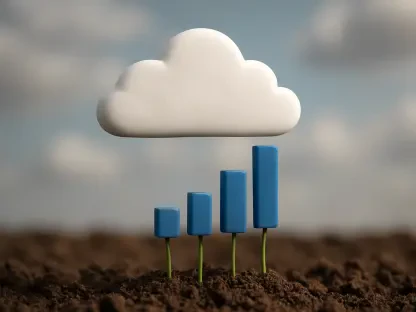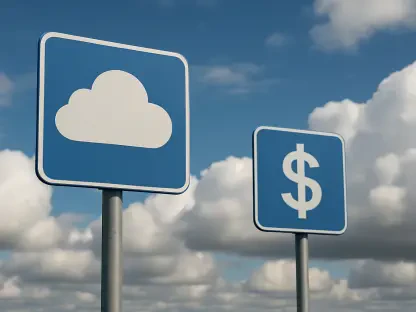As the digital landscape rapidly evolves, continuous improvement and modernization remain pivotal for international businesses like Carl Zeiss AG (Zeiss). Zeiss, a distinguished German optical goods manufacturer, is undertaking a significant transformation project by migrating its ERP system from SAP R/3 to SAP S/4HANA. This comprehensive journey, led by CIO Carsten Trapp, aims not only at IT enhancement but also at extending the scope to an effective business transformation, facilitated through a phased and greenfield approach.
Zeiss’ decision to adopt this new ERP system is fundamentally about future-proofing the business and ensuring it remains competitive in an increasingly technology-driven world. By embracing the latest technological advancements, Zeiss aims to enhance operational efficiency, streamline processes, and create a more agile and responsive organization. The phased, greenfield approach to migration underscores the company’s commitment to a meticulous and well-planned transition, one that minimizes disruption and maximizes the benefits of the new system.
The Greenfield Approach: Rationale and Benefits
Zeiss opted for the greenfield approach in its ERP migration, choosing to reconstruct its processes from scratch rather than renovating the existing ones. This strategic decision allows the organization to sweep away old inefficiencies and set standard processes initially devoid of legacy clutter. Trapp’s vision is to instate a streamlined, standardized system that can flexibly adapt to future requirements without being bogged down by past practices.
In the context of SAP migrations, a greenfield approach offers distinct advantages. By establishing a clean slate, Zeiss can avoid the logistical and operational complexities often associated with a brownfield migration where existing systems and data structures are preserved. This lends itself to greater overall efficiency and sustainability, providing a robust foundation for future growth and technological integration. Furthermore, starting from scratch facilitates the opportunity to align processes with best practices, which can lead to long-term operational benefits.
Notably, a greenfield approach also allows for the simplification of the IT landscape, reducing the number of custom codes and modifications that often clutter legacy systems. Zeiss can take full advantage of SAP S/4HANA’s built-in capabilities without needing extensive customizations. This not only reduces maintenance burdens but also ensures that the system remains easier to upgrade in the future. This method provides a forward-looking infrastructure, preparing Zeiss to swiftly adapt to evolving business needs and technological advancements.
Emphasis on Standardization and Harmonization
Standardization sits at the heart of Zeiss’ SAP S/4HANA migration strategy. By adhering strictly to SAP standards, the company aims to streamline processes and simplify maintenance. Trapp and his team take every opportunity to harmonize processes across various divisions, ensuring minimal customizations unless they are deemed absolutely necessary by the design authority.
This rigorous adherence to standards is intended to reduce future complications, facilitating easier system upgrades and maintenance. Standardization also enables better integration across Zeiss’ numerous units, providing a unified, cohesive platform that supports the company’s expansive and diverse operations while reducing redundancy and promoting operational efficiency.
Harmonization efforts extend beyond just IT systems to include business processes, ensuring that all departments and divisions operate under a unified set of rules and practices. This not only streamlines communication and coordination across the enterprise but also minimizes the risk of errors and inconsistencies. By creating a more cohesive operational environment, Zeiss can drive improved productivity and efficiency across its global operations, ultimately contributing to a stronger and more competitive business.
Change Management: Ensuring Smooth Transition
Migrating to a new ERP system inherently involves significant changes in operational processes, making effective change management a critical component of Zeiss’ strategy. Recognizing the vital role of employee buy-in, Trapp underscores the necessity of clear, comprehensive communication and training tailored to different employee personas. A profound understanding that processes and systems would change required extensive communication initiatives.
Zeiss employed a multi-faceted approach to change management, involving regular informational sessions, role-specific training, and continued support to mitigate employee resistance. By doing so, the team ensured that stakeholders at all levels were well-prepared and their concerns adequately addressed. This approach helped to alleviate anxiety and build confidence among employees, facilitating a smoother transition to the new system.
Furthermore, Zeiss’ change management strategy included the development of detailed change management plans for each phase of the migration. These plans outlined specific actions, timelines, and responsibilities, ensuring that every aspect of the transition was carefully managed. By proactively addressing potential challenges and providing ongoing support, Zeiss was able to maintain high levels of employee engagement and minimize disruption to daily operations. This strategic focus on change management is essential for the successful adoption of the new ERP system and the realization of its full benefits.
Implementing Phased Rollouts: A Risk-Averse Strategy
Trapp’s team is implementing SAP S/4HANA through a phased rollout strategy rather than a big-bang approach. This methodical, incremental process starts with pilot projects across varied settings, including non-SAP organizations, sales and service management structures, production-focused units, and shared services. These initial pilots provide valuable insights and feedback, essential for refining the system before a broader rollout.
By testing the standardized SAP template in diverse environments, Zeiss can identify potential issues, make necessary adjustments, and gather tangible evidence to support a smoother and more confident transition across the entire organization. This phased approach also allows for adjustments to be made based on real-world feedback, which can significantly enhance the overall success of the migration. It minimizes the risk of widespread disruption that could occur with a single, company-wide implementation.
The phased implementation strategy also provides an opportunity for continuous learning and improvement. As each pilot is completed, the team can apply lessons learned to the subsequent phases, ensuring optimal performance and stability of the system. This iterative process helps to build momentum and confidence within the organization, ultimately leading to a more successful and sustainable ERP transformation. The strategic decision to adopt a phased approach reflects Zeiss’ commitment to a thorough and well-coordinated migration.
Leveraging Cloud Technology with Microsoft Azure
In line with modern technological trends, Zeiss has chosen to run the new SAP S/4HANA system on Microsoft Azure. This decision reflects a broader industry shift towards leveraging cloud platforms for ERP systems, offering benefits such as scalability, flexibility, and enhanced disaster recovery capabilities. Utilizing Azure allows Zeiss to manage and scale their operations efficiently, ensuring that their SAP S/4HANA system remains adaptable and resilient.
The move to Microsoft Azure also enhances data security and accessibility. Cloud platforms are equipped with advanced security features and protocols, providing robust protection for sensitive information. Additionally, the cloud-based solution offers improved disaster recovery capabilities, ensuring business continuity in the event of unforeseen disruptions. This transition to Azure supports Zeiss’ long-term strategic objectives by providing a secure and scalable infrastructure that can evolve with the company’s needs.
Running SAP S/4HANA on a cloud platform like Azure also simplifies IT management and reduces the burden on internal resources. Cloud providers handle routine maintenance, updates, and security, allowing Zeiss’ IT team to focus on more strategic initiatives. This shift not only enhances operational efficiency but also supports the company’s broader digital transformation goals by enabling faster deployment of new features and capabilities. The partnership with Microsoft Azure demonstrates Zeiss’ commitment to leveraging cutting-edge technology to drive business innovation and growth.
Implementation and Comprehensive Training
A structured implementation process is critical for the success of Zeiss’ migration. It begins with readiness assessments, followed by a preparatory phase to ensure systems and data are primed for migration. Post-testing, the technical go-live and business go-live steps are carefully orchestrated, with the old systems decommissioned after a successful transition. Comprehensive training programs are integral to this process, with tailored instructions to prepare employees for operating the new system.
Zeiss’ IT department manages these training efforts meticulously, ensuring that only trained personnel handle the SAP S/4HANA system, minimizing errors and disruptions during the post-migration phase. The training programs are designed to address the specific needs and roles of different employees, providing them with the knowledge and skills required to effectively utilize the new system. This focused approach to training helps to build confidence and competence among staff, facilitating a smoother transition and quicker realization of the system’s benefits.
Additionally, Zeiss implements ongoing training and support to continually enhance employee proficiency and address any emerging issues. Training sessions are accompanied by practical hands-on exercises and real-world scenarios, enabling employees to apply their learning effectively. By investing in comprehensive training, Zeiss ensures that its workforce is well-equipped to leverage the capabilities of SAP S/4HANA, ultimately driving greater value from the new ERP system. This commitment to thorough training underscores the importance of preparing employees for successful adoption and long-term utilization of the system.
Lessons Learned and Future Pilots
As the digital landscape evolves rapidly, continuous improvement and modernization are crucial for global companies like Carl Zeiss AG (Zeiss). This renowned German optical goods manufacturer is embarking on a major transformation by migrating its ERP system from SAP R/3 to SAP S/4HANA. Led by CIO Carsten Trapp, this extensive effort not only aims at IT enhancement but also seeks to drive a comprehensive business transformation, using a phased and greenfield approach.
Zeiss’ decision to embrace this new ERP system is fundamentally about future-proofing the company to ensure it stays competitive in an increasingly tech-driven world. By adopting the latest technological advancements, Zeiss aims to boost operational efficiency, streamline processes, and create a more agile organization. The greenfield, phased approach to migration highlights the company’s dedication to a well-planned and meticulous transition. This strategy aims to minimize disruption while maximizing the full potential and benefits of the new ERP system, ensuring Zeiss remains a leader in the ever-evolving digital age.









